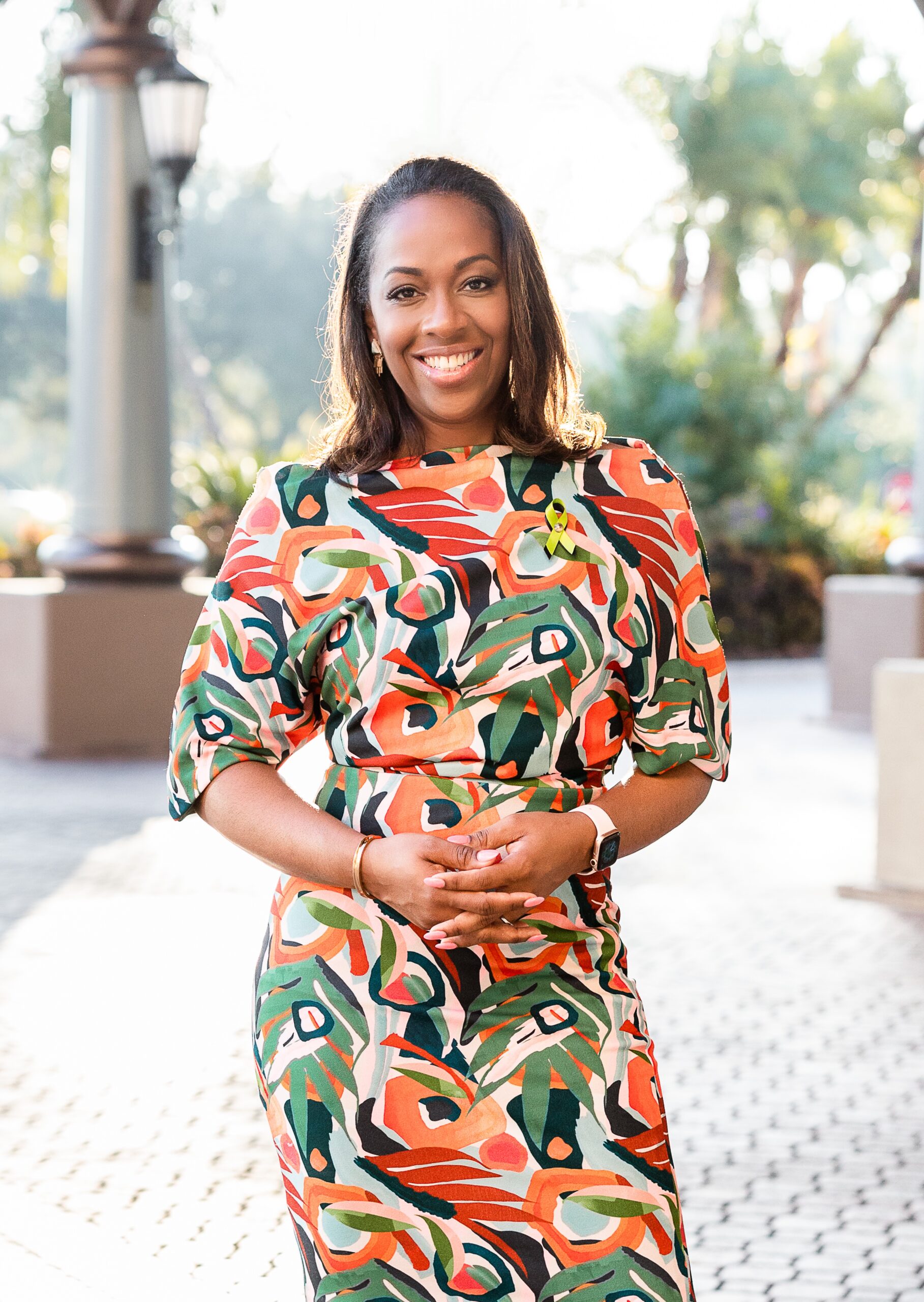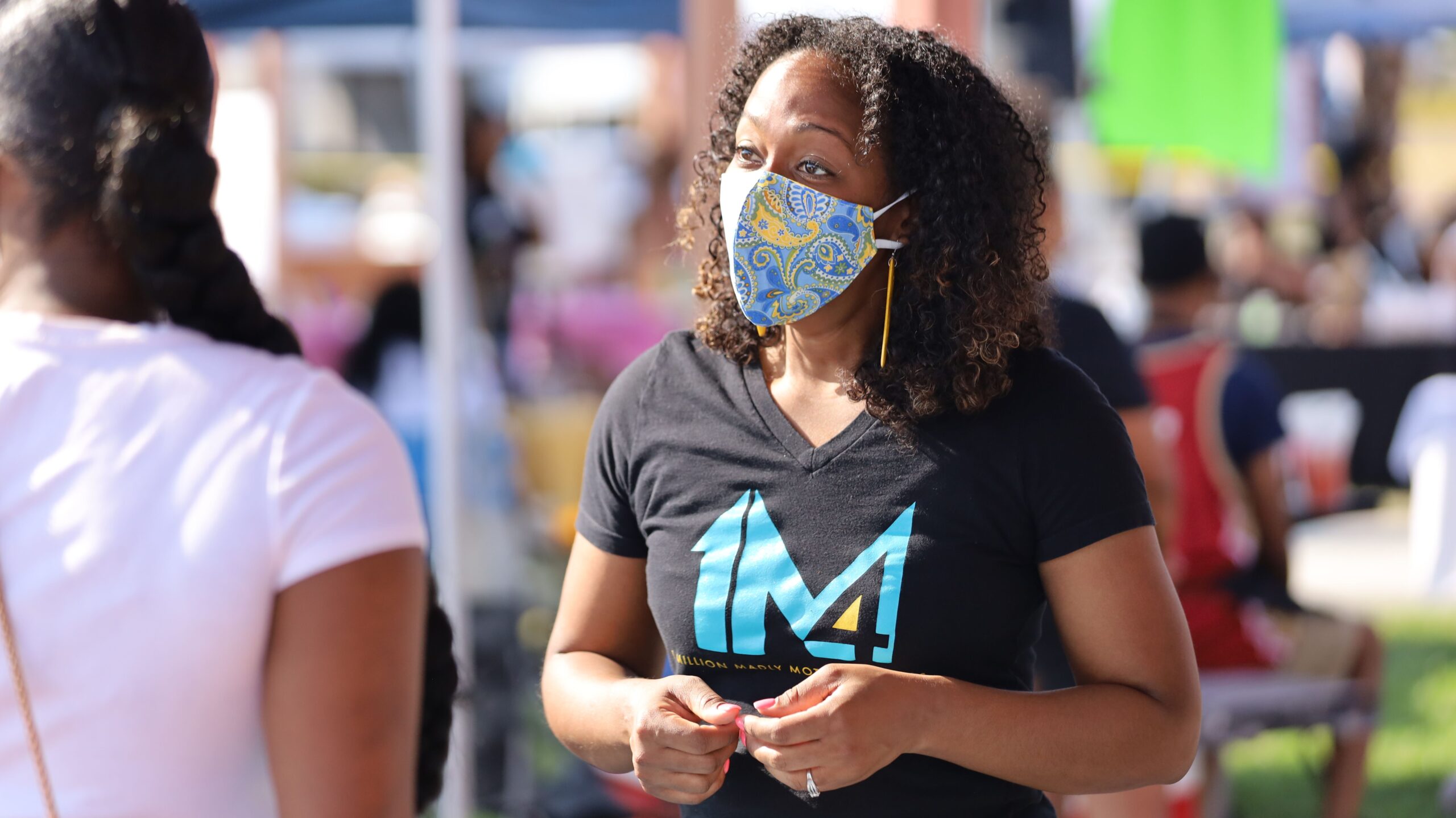Movement Strategy Center Catches up With Founder and CEO of 1M4 to Discuss the Successes and Struggles

As the nationwide replacement for the National Suicide Prevention Lifeline, 988 aimed to revolutionize crisis support in the United States. This three-digit number represents a significant milestone in the field, providing a confidential and free lifeline accessible 24/seven via phone call, text, or chat. Serving as a sister service to 911, it connects individuals with trained crisis counselors proficient in English, Spanish, and over 150 other languages.
Last year, in our conversation with Tansy McNulty, Founder and CEO of One Million Madly Motivated Moms (1M4), we discussed the launch of 988 and the organization’s ongoing effort to create and share a comprehensive guide of local and regional Mobile Crisis Units (MCUs) across the country. These units can be safer than calling the police for Black families who need mental health support.
We had the opportunity to catch up with McNulty to discuss 988’s inaugural year, particularly in light of July’s Bebe Moore Campbell Minority Mental Health Month. McNulty shared insights into initiatives developed by 1M4 in response to 988’s successes and failures. We also explored the collaboration between 1M4 and the operators of 988, what surpassed expectations, and what areas require further enhancement — all with a focus on the specialized care that BIPOC communities deserve. Finally, McNulty shared her hopes for the future of the service and her perspective on the need to secure funding to ensure the future of this transformative crisis support system.
This interview has been edited for length and clarity.
MSC: How has the implementation of 988 impacted crisis support and mental health services in the United States over the past year, particularly in the context of Minority Mental Health Month?
TM: The call numbers have increased. According to Monica Johnson, the director of the 988 & Behavioral Health Crisis Coordinating Office, [988] has received over 4 million contacts — that includes calls, texts, and chats — from July 2022 to May 2023, averaging 360,000 contacts monthly. Comparing May of 2022 to May of 2023, calls answered increased by 45 percent, chats increased by 52 percent, and texts increased by 938 percent! Contacts were answered within 35 seconds, an improvement from two minutes.
People are using the tool, right? The problem is it’s only about 13 percent of the population [knows about 988]. The National Alliance on Mental Illness did a study: in the first week of June 2023, over 82 percent of the population is still not familiar with 988. So there is a gap in information. The concern with the Black community or marginalized groups is that if only 13 percent of the population knows [about 988], what percentage of that is marginalized — Black, queer, or any other marginalized group, it’s got to be less … It makes me feel like, ‘oh crap. Are we doing enough?’ We’ve done a ton in the last 12 months … I think some of the pre-work that was done before it launched, like the interview with MSC, and then some of the other social posts, have helped, but then I feel like, as an organization, I didn’t do enough pushing after [launch]. I’m very self-critical.
MSC: But it isn’t your sole responsibility to let the entire population of the United States know about 988.
TM: This is true. But I feel like I can reach a lot of people when I’m focused on something … I can get some stuff done!
MSC: What new initiatives or developments have emerged in response to the launch of 988 that address the specific mental health needs of minority communities?
TM: In the next 12 months, you will see a much more concerted effort from 1M4 to raise awareness about 988. I am going to do an After the Call campaign … I’ve got to figure out what’s happening afterward because I feel like Vibrant Emotional Health! — the administrative organization for 988 — and the implementation team are kind of tight-lipped on the actual numbers. [Via email, Vibrant shared that] two percent of callers require some type of a law enforcement response because either there was a weapon involved or there was no MCU team available.
We need to be a lot more transparent about what two percent means. Is that two percent of all the calls that are coming in? … Or is it two percent of those that ask for a response? I can’t in good conscience tell the world about something, particularly Black and marginalized groups, if there is the risk there that someone will be hurt [by law enforcement].
There’s always a small risk there, right? … But I will feel bad for saying, hey, call this number. You’re going to get someone who’s going to be non-police, unarmed, and coming out to care for you. And then that person gets something [else or something] the call taker didn’t tell them. We need to make sure that our call takers are saying, okay, I’m sending out XYZ to come to you [with a timeframe].
We need more transparency so we’re all talking about the same numbers and no-one’s having to guess because the data is available. Then people can make their own decisions [about calling]. [People] need to be able to say, okay, I’m going to take that risk. I [need care or] want [the person I’m caring for] to get some care.
"Comparing May of 2022 to May of 2023, calls answered increased by 45 percent, chats increased by 52 percent, and texts increased by 938 percent! Contacts were answered within 35 seconds, an improvement from two minutes."
MSC: What role has 1M4 played in supporting the implementation and ongoing effectiveness of 988, particularly in advocating for and providing specialized care for minorities?
TM: The infrastructure is not fully there yet for everyone to get a non-police response across this country. 988 [remains a] suicide prevention and crisis line — [it’s called the 988 Suicide & Crisis Lifeline and replaced the National Suicide Prevention Lifeline (1-800-273-8255)] … But for those who actually need a response, we still got some infrastructure building to do. And that’s not all 988’s fault — we need a lot more response teams. In addition to [1M4’s] Guide to Saving Lives, I’m now on the Expanding First Response Commission. The commission’s purpose is to provide federal and state policymakers with information on what a non-police response should look like. It’s 21 of us, across the country, who meet monthly to come up with a list of recommendations. So as funding is floating around — a lot of money is floating around right now for mental health — I’m there to make sure money does not [create another racist system]. I’m trying my best to make sure that the recommendations provided have marginalized groups in mind. Our first report [should go] out in September.
MSC: Will this commission provide a platform for discussing ongoing efforts, adjusting funding, and ensuring sustainability for the implementation of 988?
TM: [The commission exists so that more response teams can be created] for 988 to link to. As a commission that’s focused on community response, not just not co-response — I was very vocal that co-response is not my preference … Co-response is law enforcement. That means [to receive support, law enforcement] is going to be there. For us, community response is unarmed but not untrained. [I borrowed the term from] Amherst Community Emergency Response Team, out of Amherst, MA. They presented to [the commission], and I was blown away by how well they integrate public safety. [Their] team is the third department in public safety. You have policing, fire, and then the community response team, and they show up without a gun.
This commission is meant to help the federal and state governments understand what’s needed so 988 [operators] have somewhere to link people to. [The commission supports] in understanding what community response is, because a lot of people, including government officials, don’t understand what that looks like … We have to actually define it [and] show them some examples of people who are already doing it. We have a few hundred across the country who are already doing it, and we encourage them to fund that type of work.
"For us, community response is unarmed but not untrained."
MSC: What are the current challenges and limitations in terms of response capacity and integration with existing mental health crisis services?
TM: In the last three months, I have gotten more phone calls and text messages than I would like to admit from people across the country. One girl — she gave her permission to share — was on the emergency room bathroom floor, because [ER nurses] didn’t believe she was having a severe panic attack. This “high-functioning” Black woman was on her phone, shaking in the bathroom, and texted her friend, who was my friend. [She calls me], “hey Tansy, can we send a mobile crisis unit or community response?”
My friend shouldn’t have had to go to me, [she] should have [a resource] she could call. That’s the problem. I’m getting calls like this all the time and I know I’m not the only one … People can’t just be left in the dark at one of their darkest moments.
A lot of people had in their mind this was going to be a true alternative response for mental health emergencies but we don’t have enough response teams across this country. There are a lot more coming on board. Even our current MCU guide, I have another hundred that we still need to add. Our guide is open to anyone who wants [to be included and has been] referenced in academic research. And, I recommend to anyone who uses the guide to find your state, find your city, look at those administrative numbers, and get to know [the organizations]. Call them right now and verify that the information is true and still accurate.
It’s a tool for us to communicate, push information out to people. Then people can come back to us and say a number didn’t work — we haven’t gotten that yet, thank goodness! Gathering community response [is essential].
We do have co-response in our guide, but it’s only because there were not enough community responder [options]. I get upset sometimes when people say never call 988, but don’t give another option … I want [people] to have somewhere to go. But, I will tell you there may be some risk if you call …
Then there are some community response teams that will not want to integrate with the state, period. They don’t want to. They don’t want to put people at risk. They don’t trust that the state will actually care for people. So they may not want to ever be integrated with 988, or 911 for that matter … We hear this as a warning, and that’s valid. [MCUs] should make the state prove that they’re going to care for people.
MSC: From your perspective, what aspects of 988 have worked well and exceeded your expectations for minority communities or in general?
TM: The fact that there’s an option. There is a true National Suicide Prevention Lifeline. Someone you can call and, within 20 to 30 seconds, will answer the phone or text or chat. People are getting linked very quickly. It wasn’t as good when it first dropped right but it’s improved quite a bit — that’s great.
They’ve done well connecting with faith communities and targeting faith leaders. It’s been very effective in reducing mental health stigmas in churches and mosques. We don’t want to just pray about it, ignore it, and put our heads in the sand … Which does impact Black and marginalized groups.
Even with a two percent response requiring law enforcement, I am thankful that 98 percent did not. While I want to drive that two percent to zero percent, I can celebrate that millions of people could talk to someone on the phone and not require a [police] response. And there are hundreds of thousands who may have received a non-police response or got a resource outside of policing who were not jailed or incarcerated. Those are good things.

MSC: What else is 1M4 working on?
TM: Everything. Sis is tired. Sis is me. Sis is us!
No seriously. We have been and are doing a lot to keep our community safe from harmful policing and state sanctioned violence but also safe within ourselves promoting mental wellness resources and hosting conversations about thoughts of suicide and self harm.
Our efforts extend to cases like Terrence Richardson and Ferrone Claiborne (wrongfully incarcerated for 24 years in Virginia) and the case of Marlon Howell (wrongfully incarcerated for 22 years, from my hometown in Mississippi). Both cases highlight the harm caused to Black and poor people who accept any type of plea deal.
Additionally, we stand alongside families seeking accountability and systemic change for victims of police killings, such as Jamarion Robinson (shot over 60 times), Isaiah Williams (his mother is a former police officer), Xzavier Hill (his murderers were recently granted immunity and his mother is appealing), James Williams (shot through a fence without proper announcement of police presence), Atatiana Jefferson (her murderer was convicted and sentenced in December 2022).
In the future, 1M4 aims to unite impacted families through a legislative policy tracking tool to inform them and the public on how policies directly affect policing and the safety of the Black community. We have also been actively conducting virtual bystander training in partnership with Right To Be and ANJEL Tech to teach the public how to safely document police violence. Our last training is scheduled for August 29. Readers should join 1M4’s email list to support our work, join our efforts, and be informed of upcoming events.
Lastly, we just hosted a public Sista Check In discussing Black women and suicide in efforts to reduce thoughts of self harm and break the silence associated with suicide. You can check out the resource list that accompanied the conversation here.
McNulty’s headshot is by Tiffany D. Brown Photography.

